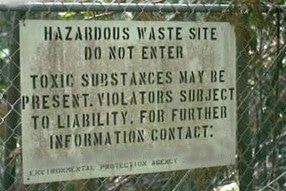Former Pesticide Manufacturing Plant
Location: Central New Jersey
Regulatory Program: Superfund (CERCLA)
Duration: 2001 to 2002
Summary: Provided technical support to a New York based consulting firm at an active manufacturing site adjacent to a high-profile Superfund site. Reviewed and provided technical comment on work scope, conduct field oversight of contractors during drilling activities, implemented approved Health and Safety Plan.
Princeton Geoscience provided technical support to another consulting firm during offsite investigations at a major central New Jersey Superfund site. Specific activities included reviewing and providing technical comments on project work plans and oversight of field activities performed to delineate the offsite extent of pesticide compounds in subsurface soil.
Although the delineation work was being performed by the parties responsible for remediation of the Superfund site, a goal of Princeton Geoscience and its client was to ensure that work was completed in such a way that further evaluation would not be required for this issue under New Jersey’s Industrial Site Recovery Act, should the property owner decide to sell the facility. Direct-push and hollow-stem auger drilling equipment were used to advance over 60 borings to bedrock. Borings were biased toward former locations of several swales that historically conducted runoff away from the Superfund site land parcel, prior to site development in the late 1970s. The swales were in some areas removed and in others buried during development of the offsite property, and their historical locations were determined based upon interpretation of historical aerial photographs and topographic maps.
In addition, the offsite property on which the work was being performed was an active facility. Therefore, another challenge was to ensure that investigative activities performed adequately achieve the delineation objectives while preventing any actual or perceived exposures to workers, the public or the environment at the facility. This involved thorough monitoring of the contractor’s compliance with the approved Health and Safety Plan. Important aspects of the health and safety program included performing geophysical surveys to locate numerous subsurface utilities prior to drilling, enforcement of work zones, and conducting air monitoring to prevent exposure to dust and organic vapors which might result from the drilling operations.
At the time of Princeton Geoscience’s involvement with this project, the Superfund site responsible parties were designing and implementing a soil removal action to remediate contaminants on both the offsite property and the neighboring Superfund site. This work was to involve excavation and offsite disposal of over 100,000 cubic yards of pesticide-contaminated soil. Due to the intrusive nature of the work, significant planning, air monitoring and countermeasures were developed to prevent dust and/or vapor migration from the work area and to ensure health and safety of workers, neighboring people and the surrounding environment.
